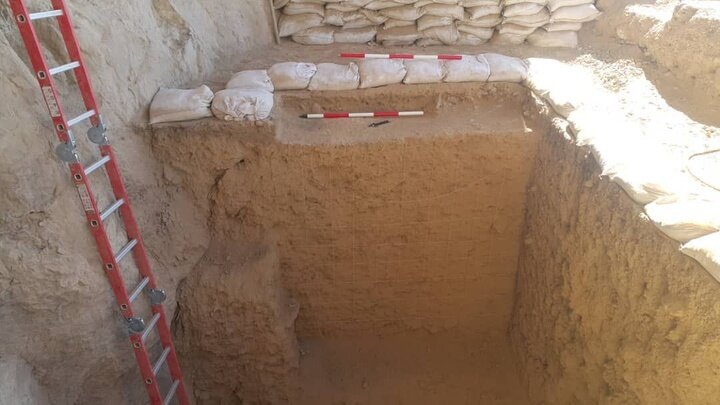Human traces dating back 14,000 years discovered in southern Iran

TEHRAN – A team of archaeologists has found human traces in recent excavations they conducted at the rock shelters of Pir-Quch in southern Iran.
“Based on the discoveries made during the one-month excavation at this site, the history of the area dates back approximately 14,000 years,” said Hassan Afshari, who led the excavations.
“Stone tools and bone data have been unearthed in this shelter.”
Afshari elaborated that a team of ten individuals was engaged in the recent excavation for a month, conducted with the permission of the Research Institute for Cultural Heritage and Tourism.
This significant discovery sheds light on the ancient history of Arsanjan and underscores the importance of continued archaeological research to unravel the mysteries of human civilization in Fars province.
Moreover, Mohammad Sabet Eqledi, the provincial tourism chief, said: “This shelter, which dates back to 7,000 to 12,000 years before Christ, was explored by archaeologists for the first time.”
“The archaeological excavation of the Pir-Quch rock shelters was conducted for one month by an Iranian archaeological team,” Sabet Eqledi said.
Sabet Eqledi further remarked, "Based on archaeological evidence from prehistoric periods and continuous human presence in the Fars region, it is necessary to focus more on archaeological activities and complete archaeological studies to understand historical periods better."
The ancient region of Fars, also spelled Pars, or Persis, was the heart of the Achaemenian Empire (550–330 BC), which was founded by Cyrus the Great and had its capital in Pasargadae. Darius I the Great moved the capital to nearby Persepolis in the late 6th or early 5th century BC.
Celebrated as the heartland of Persian culture for over 2000 years, the capital city of Shiraz has become synonymous with education, nightingales, poetry, and crafts skills passed down from generation to generation. It was one of the most important cities in the medieval Islamic world and was the Iranian capital during the Zand dynasty from 1751 to 1794. Moreover, Shiraz is home to some of the country’s most magnificent buildings and sights. Increasingly, it draws more and more foreign and domestic sightseers flocking to this provincial capital.
Afif-Abad Garden, the Tomb of Hafez, the Tomb of Sa’di, Jameh Mosque of Atigh, and Persepolis are among the historical, cultural, and ancient sites of Shiraz that are of interest to domestic and foreign tourists. The ancient city is also home to some magnificent historical gardens, such as Bagh-e Narenjestan and Eram Garden, which are top tourist destinations both for domestic and international sightseers.
AM
Leave a Comment